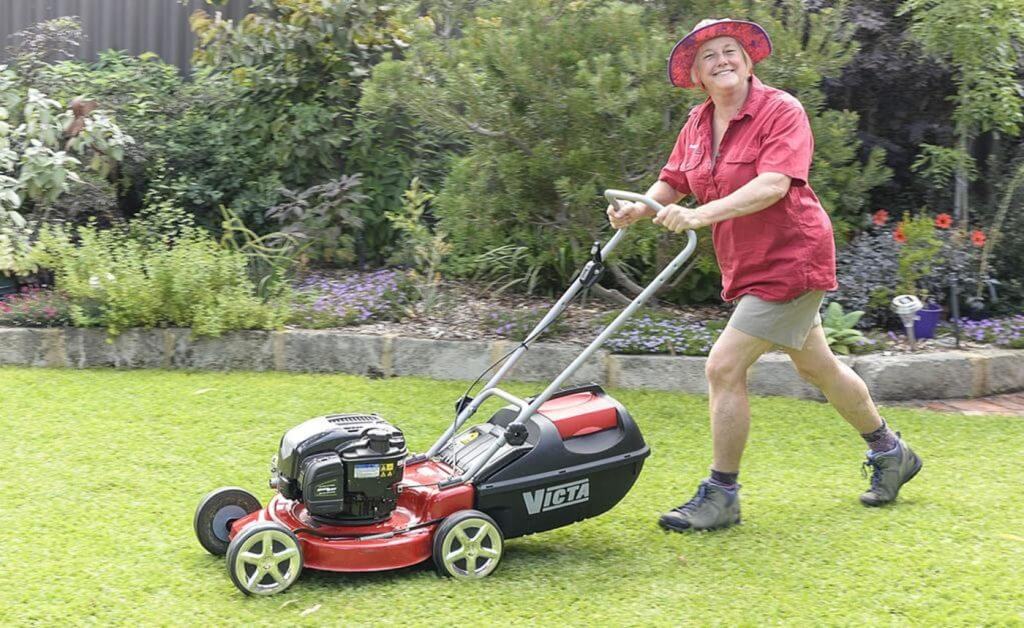No products in the cart.
Perfect lawn is the number-one goal for many home gardeners.
Lawn is not necessary in all landscapes but it has an important cooling effect around a house and provides a place for kids, pets and adults to play. If shady trees are planted in or on the boundary of lawns the cooling effect is even greater.
We don’t need vast amounts of lawn around our houses but we certainly need some to offset the urban heat island effect that hard surfaces and lack of public open spaces are creating. Green spaces entice us outdoors to live a healthier and less stressful lifestyle.
The most important factor in growing a good lawn is preparation. If you do the right prep and select the lawn type suitable to your conditions it shouldn’t use any more water then your garden beds. I know lawn has a water-guzzling reputation but it’s just not true.
Soil: You will need to get the soil right. If you live in sandy soil you will need to incorporate clay, loam, compost, wetting agent and slow-release fertiliser like Grow Safe. If you live up in the Hills you will need to build the soil profile but don’t use any clay.
Wetting agent: its imperative you use a wetting agent and retainer use Soak Up its important for your lawn’s health.
Mowing: If your lawn is subject to heavy water restrictions and may experience drought-like conditions, then the lawn mowing height should be increased. This will allow the lawn leaf and thatch layer to insulate the soil against heavy water loss from evaporation and the end result will be greater lawn health — using less water, as summer progresses.
Regular mowing is needed in summer — healthy lawns will benefit from fewer weeds and more green leaf with less invasion of the grass into surrounding garden beds.
Liquid fertilising: Using the Lawn Love every month delivers nutrients directly to the leaf blades and is absorbed immediately. Lawn Love will help your lawn become less suitable to disease attack.
Granular Fertilising: Lawn is probably the most over-fertilised plant in your garden. People throw it around like chook food. If your lawn is established, it doesn’t need phosphorus. If you have done the preparation when laying the lawn, it should only need to be fertilised at the beginning of spring, summer and autumn. Use Grow Safe fertiliser, you only need one handful per square metre. If you use more it goes straight into our waterways. The other important thing to note is the more you fertilise, the more you have to mow.
Beware the thatch: Watering a heavily thatched lawn will waste a lot of water. The water just sits on top of the thatch and evaporates before it goes into the soil.
Lawns should be de-thatched (verti-mowed) whenever is necessary and done so in the spring.
Varieties such as buffalo or kikuyu can be mowed much lower at the beginning of spring instead — as an alternative to vertimowing and to reduce thatch.
Seven favourite lawn varieties for WA gardens
1. Sir Walter Buffalo
This is one of my favourite lawns after two big dogs and a family that hammers my back lawn. It’s been trouble-free and looking great for 10 years now.
Sir Walter is a soft-leaf buffalo with deep roots, a low thatch habit and a tight growth sward. It stays greener throughout summer and winter and is disease resistant.
Another benefit is that it has proven shade tolerance so this makes it ideal for small courtyard areas and under trees.
2. Sapphire
Sapphire is a very soft-leaf buffalo that is about 17 per cent finer than other soft-leaf buffalos when it is mature.
It’s one of the more frost-tolerant lawns, coping with -10C. in winter, so is a good one for inland and down south. It is a deep blue-green colour, grows well in dappled shade, is drought tolerant and out-competes weeds.
3. Palmetto
Palmetto is a soft-leaf buffalo variety with great shade tolerance. Like Sir Walter, it is drought-tolerant and maintains its deep green colour throughout the year.
It’s a good lawn for kids and dogs alike and outruns any weed competition.
4. Empire Zoysia
You may know Zoysia by the name of Empire or Empress grass. A fantastic drought-tolerant lawn, it has a soft leaf shaft, making it a great lawn for small children.
The downside of it is that it has a slower growth rate than other lawns and takes a long time to recover if you have a few kids and dogs. The upside is that it requires much less frequent mowing.
5. Envy
A beautiful soft leaf-lawn that is known as Queensland blue (Digitaria didactyla), Envy is a very soft dense grass with a beautiful blue-green colour.
It needs full sun and does well in coastal areas with high humidity but doesn’t thatch up like couch. It is slower growing and less invasive then couch but not as drought-tolerant as the buffalo types.
6. Kenda and Village Green
This is Pennesetum clandestinum, which is a sterile form of kikuyu that does not produce viable seed, eliminating the problems with seed dispersal into native bushland. Both types manage to survive the winter better and produce a dense rhizome growth, making them more drought tolerant.
This is a good turf for dogs and kids.
These lawns will need full sun and are practically indestructible, surviving neglect and extreme heat.
7. Matilda Buffalo
Matilda is a soft buffalo lawn with its own unique strengths and characteristics which separate it from the other soft-leaf.
Matilda is a semi-dwarf buffalo lawn, which simply refers to Matilda having finer and thinner stems and stolons, a trait which is unique among the better-selling and better- quality buffalo lawn types. The leaf width is narrower than common buffalo and Sir Walter, and wider than sapphire, with a leaf width approximate to palmetto.
